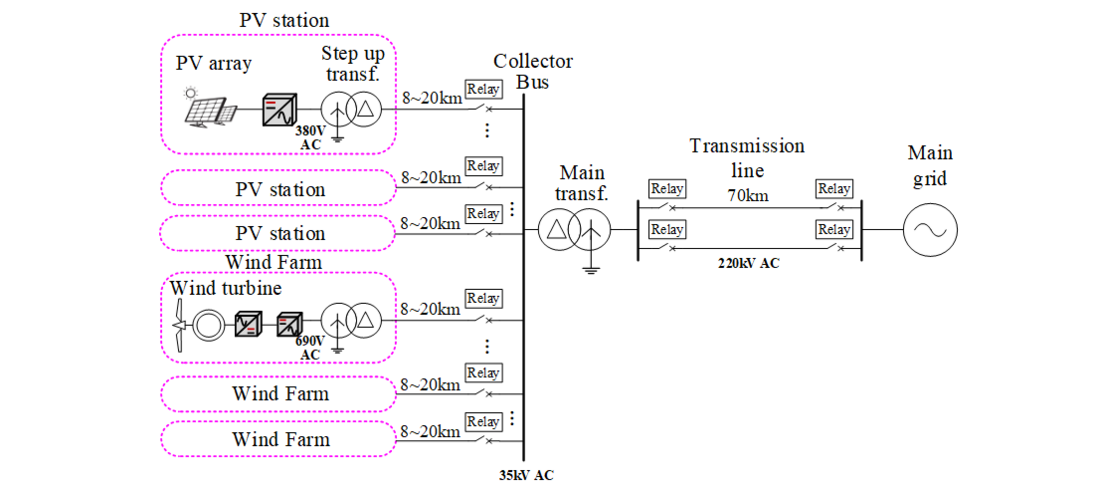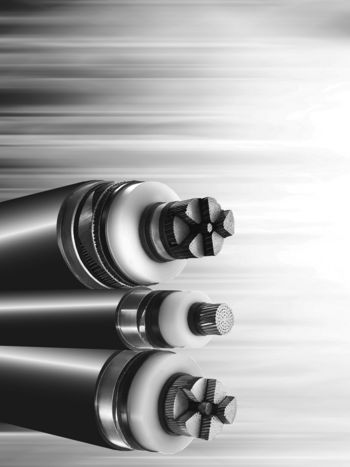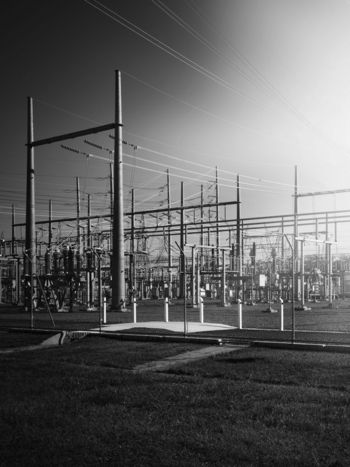Protection for Developing Network with Limited Fault Current Capability of Generation
Protection is important to safe and reliable operation of the power grid. Traditional protections are designed based on the fault characteristics of the conventional system with thermal power as the main energy sources. However, new generations, network structures and loads are integrated into the grid, which leads to challenges for protection functions.
Members
Convenor (CN)
T. BI
Secretary (CN)
K. JIA
S. RAJNISH (AU), G. PHILIPPE (BE), V. FRANCO (ZA), P. NAGARAJU (UK), R. ATHULA (CA), B. CHRISTIAN (DE), N. PHILIP (UK), S. SACHIN (IN), X. XIONG (CN), W. BJORN (SE), H. FAHD (UK), M. GHEORGHE (RO), N. NIRMAL (NZ), M. SURESH (IN), C. ROBERTO (ES), S. MICHAEL (US)
Introduction
High proportion of power electronic devices are penetrating the power sources, power grid and load of the power system. Due to the depletion of fossil energy and increasing environmental pollution, renewable energy represented by wind power and photovoltaic power is gaining more and more attention all over the world. These new power sources, whose generation mechanism is different from that of synchronous generators, are changing the fault characteristics of the system. In addition, new structures, such as active distribution network, microgrid and VSC-HVDC, are widely applied to improve energy efficiency, popularize and promote the use of renewable energy. These changes results degradation of traditional protections, and even the risk of maloperation and rejection.
Models for fault current calculation is the basis of analyzing system fault characteristics, researching protection adaptability and putting forward new protection principles. According to the industrial projects, this brochure provides different testing system benchmarks for protection research. To establish the short-circuit current model of various power electronic devices in different scenarios, we must start with the control system and get the fault current characteristics by combining the typical topology and parameters derived from industry application. Based on this, the subsequent analysis of protection adaptability and exploration of new protection principles are carried out.
Based on the analysis of fault characteristics, this Technical Brochure researches the performance of traditional protection in order to determine the protection configuration principles and explore new protection principles. The researched protections include the traditional protection principles based on current, impedance, communication, traveling wave and islanding protection.
To solve the problems faced by conventional protection, it is particularly important to research the new principle of relay protection adapting to the limited fault current sources. This Technical Brochure presents the novel protection principles of renewable energy power plants, AC/DC hybrid system, and DC distribution system. The new protection principle proposed at present can adapt to the integration of limited fault current power supply to a certain extent. However, most of these protection principles are in the theoretical research stage and have not yet been applied to industry engineering. The results of the survey conducted by this working group are presented at the end of the document. And it is recommended to do more systematic researches for protection of the developing network.
Structure of the Technical Brochure
The Technical Brochure includes the following chapters:
- §1 introduces the current status and future requirements of renewable energy, power grids and electrical vehicles of various countries, including China, the United States, Europe, Canada, and India.
- §2 presents the topology and characteristics of wind generation, photovoltaic power generation, energy storage and electric vehicles.
- §3 presents structure changes of the power grid with high proportion of power electronic devices. The chapter also includes topology analysis and fault analysis of various new structers, including active distribution network, microgrid and VSC-HVDC.
- §4 provides models of different renewable energy sources for fault current calculation, as the basis of analyzing system fault characteristics, researching protection adaptability and putting forward new protection principles.
- §5 presents the analysis of impacts of wide application of power electronic components on individual protection.
- §6 presents novel protection principles of renewable energy power plants, AC/DC hybrid system, and DC distribution system.
- §7 provides the conclusion including recommendations to improve protection for developing network.
Testing System Benchmarks for Protection Research
According to the existing engineering projects, the networks integrated with various power electronic devices can be categorized as 4 scenarios. In this brochure, we have set the different testing system benchmarks for different relay operating situations for our members as follows.
Scenario 1: AC/DC Hybrid Distribution System

Figure 1 - Diagram of AC/DC hybrid distribution system
AC/DC Hybrid Distribution System contains AC grids, renewable power generations, industrial AC loads, DC batteries and DC loads, DC data centers and low voltage residents' living loads.
Scenario 2: Large Scale Wind/PV Generation and Integration System

Figure 2 - Diagram of large scale wind/PV generation and integration system
Large scale wind/PV power generation and integration system has the low voltage level of power collection lines, step up transformers, main transformers and transmission lines.
Scenario 3: Multi-Terminal High Voltage VSC-HVDC System

Figure 3 - Diagram of multi-terminal high voltage VSC-HVDC system
Multi-terminal high voltage VSC-HVDC system contains DC breakers, lines and at least three VSC-HVDC power conversion stations which can connect to both AC renewable generation systems and the AC grids.
Scenario 4: High Voltage LCC-HVDC Transmission System

Figure 4 - Diagram of high voltage LCC-HVDC transmission system
High voltage LCC-HVDC transmission system has LCC-HVDC power conversion stations, DC lines, DC Breakers and AC lines and its breakers.
Models for Fault Current Calculation
Naturally, as the penetration of inverter-based resources continues to increase on the bulk power system (BPS) and sub-transmission...



